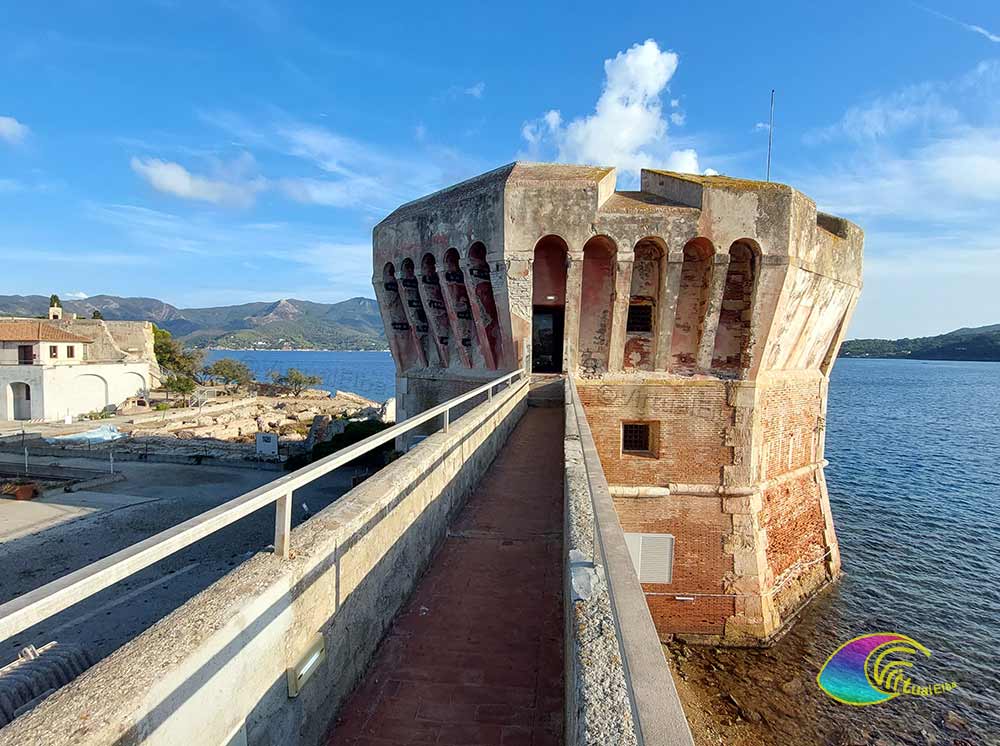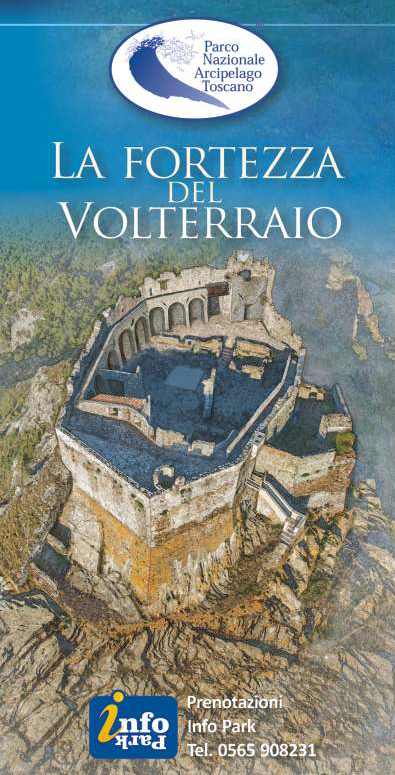Volterraio Castle formerly Monte Veltraio

The Volterraio Castle, anciently called Mount Veltraio is hexagonal, it was built around the year one Thousand, in the point where, probably the seat of a pre-existing structure of the etruscan period. The fortress was restored in the century era, probably on a project of Vanni Gerardo Rau, to adapt to the defense needs of the time.
In 1544 the fortress was the siege of Khayr al-Dīn, and later, in 1553, by Dragut.

The Volterraio Castle, an architectural complex in the military, he carried out the functions of sighting a wide range along the coast north of theElba and towards the sea facing; when the area became part of the grand duchy of Tuscany, the fortress was built, although located in an isolated position, the defensive system that was set up by the Medici in the heart of the town of Portoferraio.
Abandoned castle in 1798

The complex continued to carry out its functions, The Castello del Volterraio even in the eighteenth century under the Lorraine, and then become a garrison of the napoleonic troops at the end of the century. The Castle was abandoned in 1798, after the uprising against the French military, which led to the semi-destruction of the complex.
The Castle of the Volterraio has recently been restored and can be visited
waiting in line at Info Park Tel. 0565 908231
The history of Volterraio and the Park
The Volterraio Fortress, located 394 meters above sea level on the mountain of the same name on the municipal border between Portoferraio and Rio Elba , dates back to the 11th century. The origin of the name, perhaps derived from the Latin Vultur (vulture), can also be traced back to the provenance of the Volterra architect Vanni Gherardo Rau commissioned by the Pisans, who in 1231 (birth of the Volterraio Castle) began to fortify the fortress built around two hundred years ago.
Starting from the end of the 4th century BC, the peculiar morphology of the relief was exploited for the installation of a “ high sea fortress ” necessary for its strategic importance acquired by the island of Elba in the Tyrrhenian Sea and for the presence of precious mineral resources. As evidence of the frequentation of the site since ancient times, many materials have been collected over time, referable to a chronological period that goes from protohistory, to the Etruscan and Roman age. The Volterraio site is part of the island’s defensive system conceived by the Pisan Republic, well aware of the local vulnerability to pirate raids.
The Volterraio Fortress resists the assault of 1544

Thanks to massive reinforcement and expansion works carried out around 1440 by Jacopo III Appiani, the fortress was able to withstand the assault of the Turks in 1544. In 1688, with the governor Tornaquinci, important renovations were carried out. With the suppression in 1777 of the military genius by the Grand Duke of Tuscany Pietro Leopoldo, it was decided to dismantle most of the fortresses of Elba , including the Castello del Volterraio. In 1798 the French troops settled in Portoferraio and strengthened the garrison of the stronghold, in this period a popular uprising led to the semi-destruction of the complex, which has since been definitively abandoned.
The Volterraio Castle inside the Park Authority
The fortress and the surrounding soil, placed in a natural landscape of rare beauty, were purchased by the Park in 1999 for a total amount of € 500,000. This is a good bound pursuant to Legislative Decree no. 42/04. In 1999, the Park had to draw up a draft, prepared by the University of Pisa, which analysed the state of decay of the monument and included a number of conservation actions required in order to stop the state of decay. The lack of resources you will have to wait until 2013 to start the final restoration to the Volterraio Castle.

In the first lot of surgery at the Castle the Volterraio, has been provided for the implementation of works aimed at the functional recovery of certain architectural elements, including the original entrance, the wall-walk the perimeter and the restoration of the tower, with a walkway to the entrance along with that of the Chapel. You have performed a clean up from the weeds, waste, including higher plants with high hazard index as holm oak and fig tree for the protection of the walls.
The second phase in 2016 will lead to the completion of some work in the Volterraio Castle, including the archaeological excavation. Will be improved, the current path of access to, and recover the ancient routes connecting with the town of Stone and the Journey of the Rada, the path that connects the Tower of the Tongue of Portoferraio at the Volterraio.
The structure of the Volterraio Fortress
The Volterraio Castle has a hexagonal plan, the quadrangular tower rises in the most suitable point for sighting and together with the walls it is the oldest part of the fortress, constitutes a precious historical testimony of Elba’s defenses. The entrance to the tower is connected to the walkway by a wooden drawbridge. A signaling system that covered the entire territory and partly also the Tuscan coast made it possible to communicate with other towers of the territory. The walls follow the course of the land and have an irregular shape, it was born as a fortified enclosure around the tower.

Volterraio Castle drawing
1) Square tower
2) Walls
3) Cistern
4) Access stairs to the patrol
5) Gunpowder warehouse
6) Walkway patrol initially in wood then in masonry
7) esplanade for the artillery
8) machicolation in defense of the gate
9) chapel built in the seventeenth century.
10) soldiers’ lodgings
11) Rivellino (south-west bastion)
12) Drawbridge and masonry staircase of the seventeenth century.
Design: by Cinzia Battaglia – Info Park







